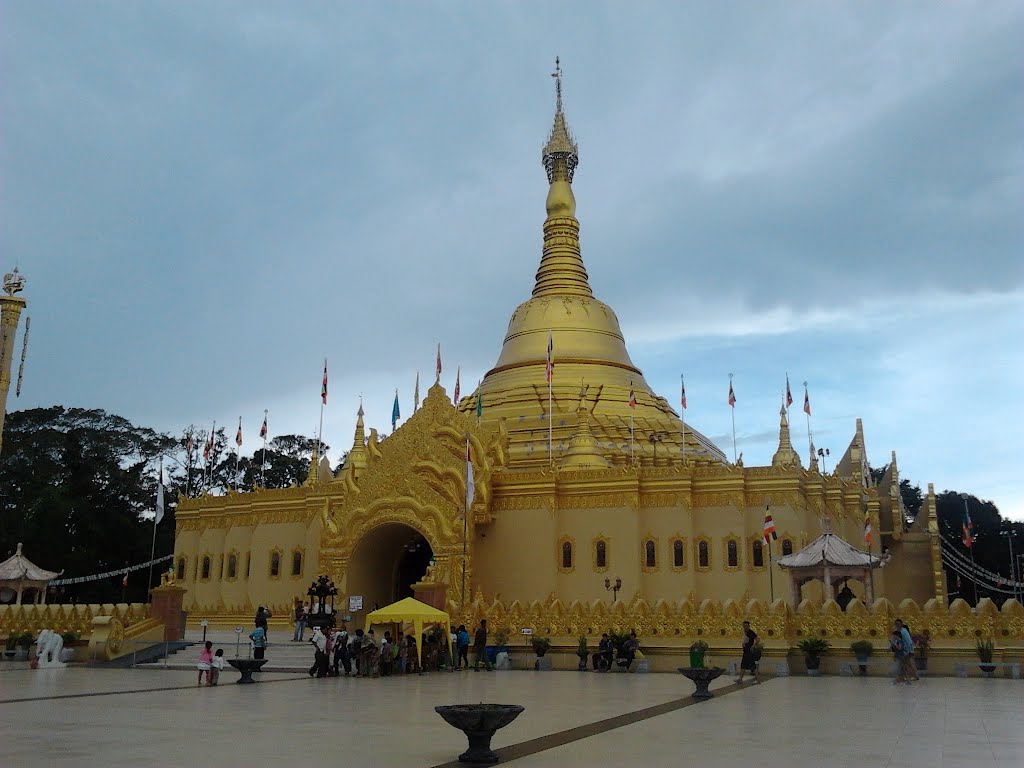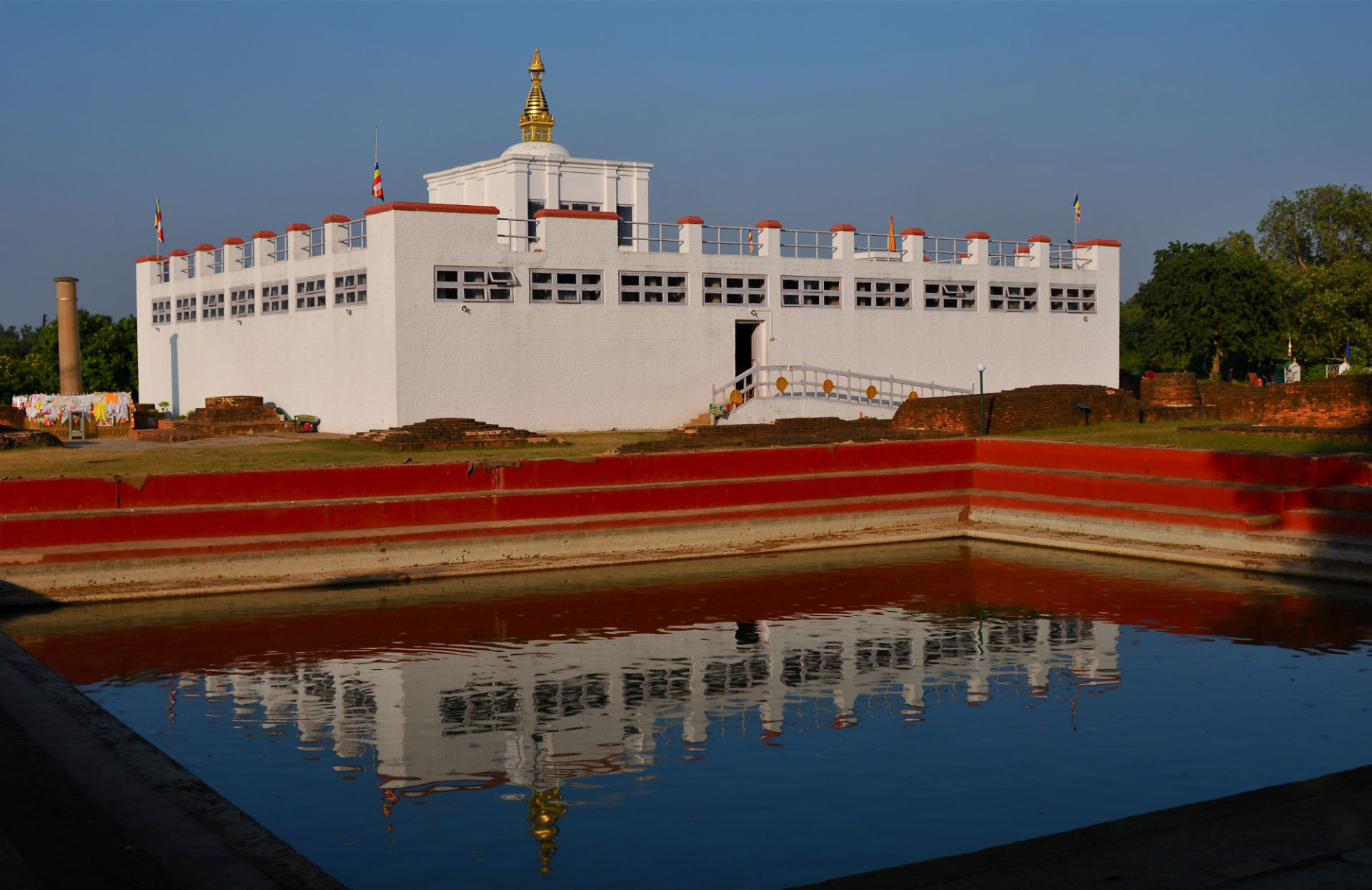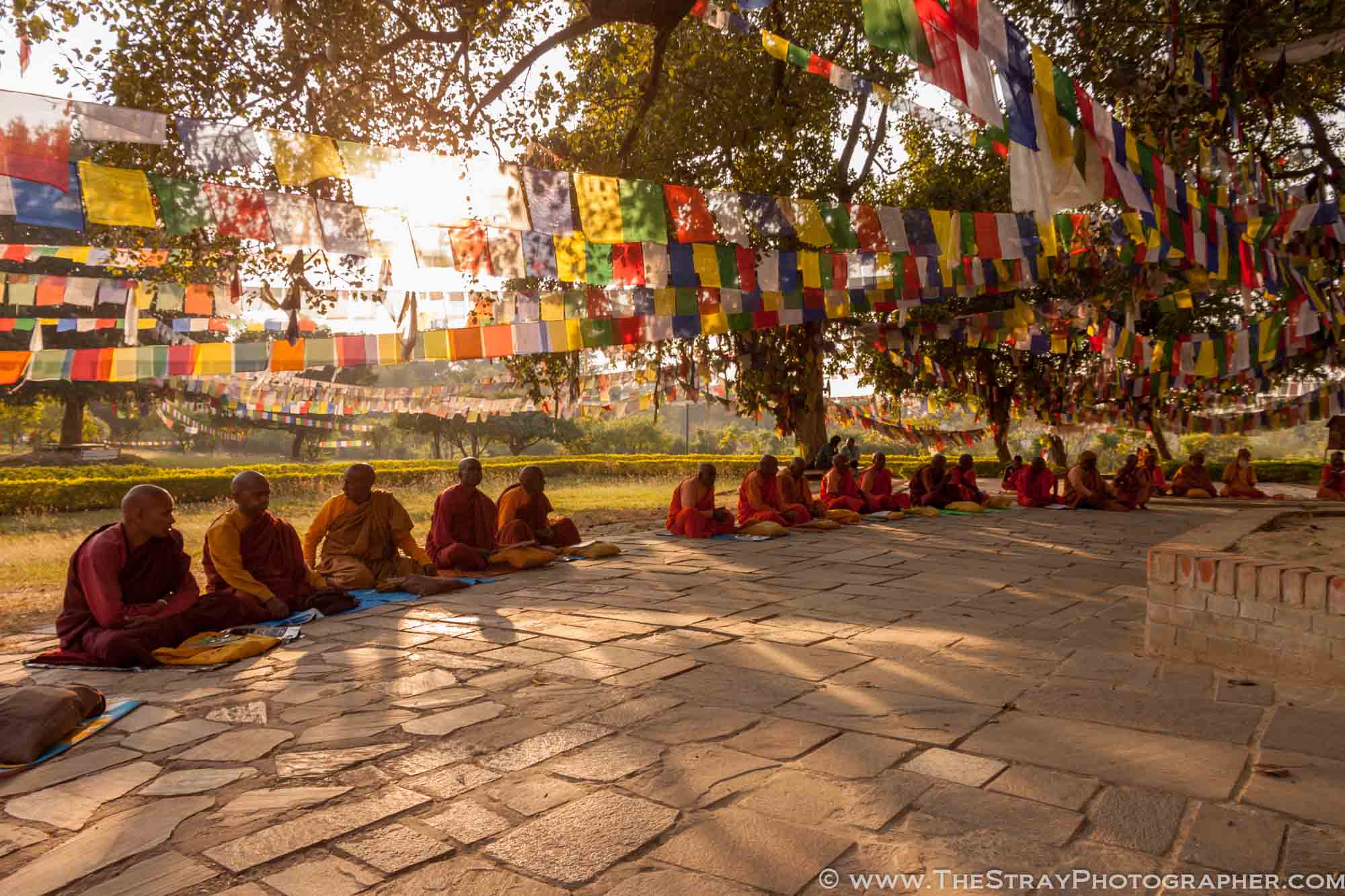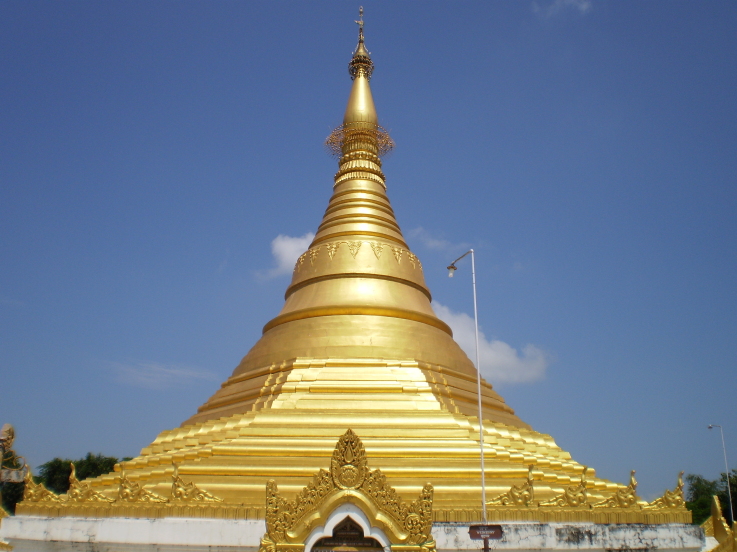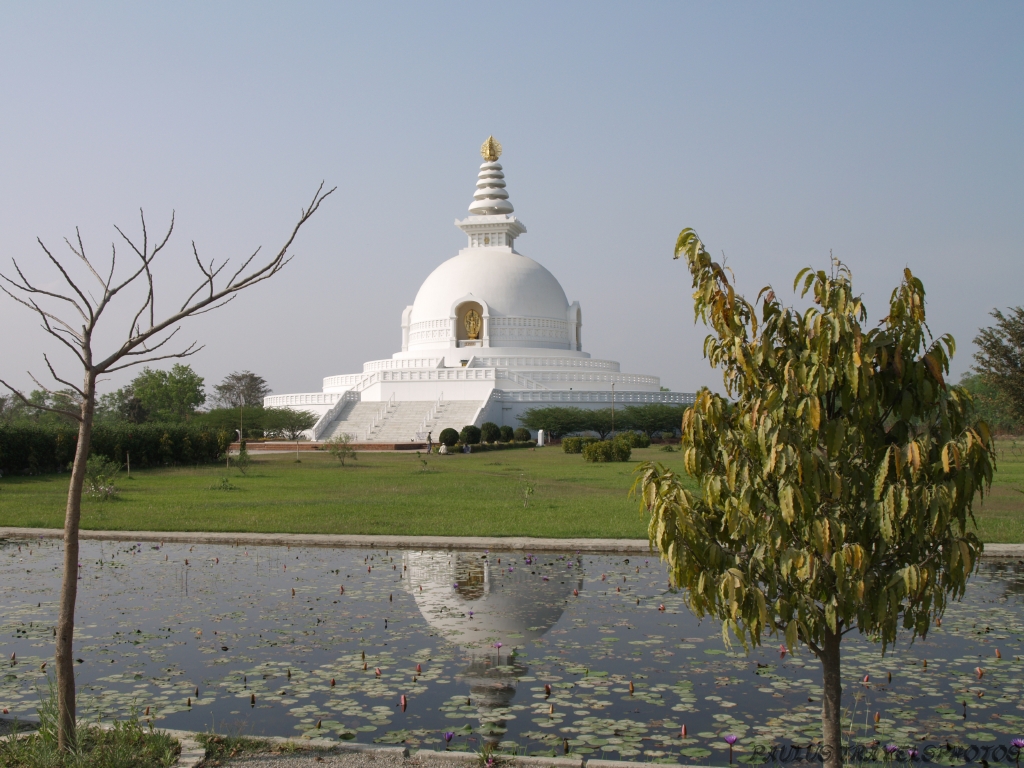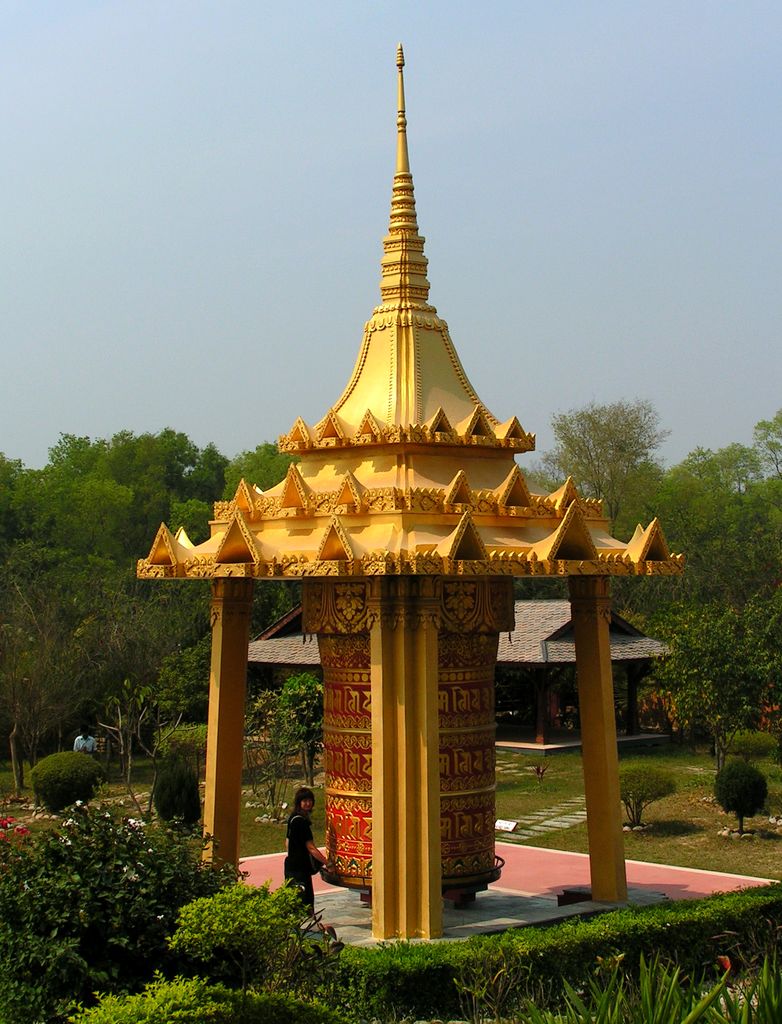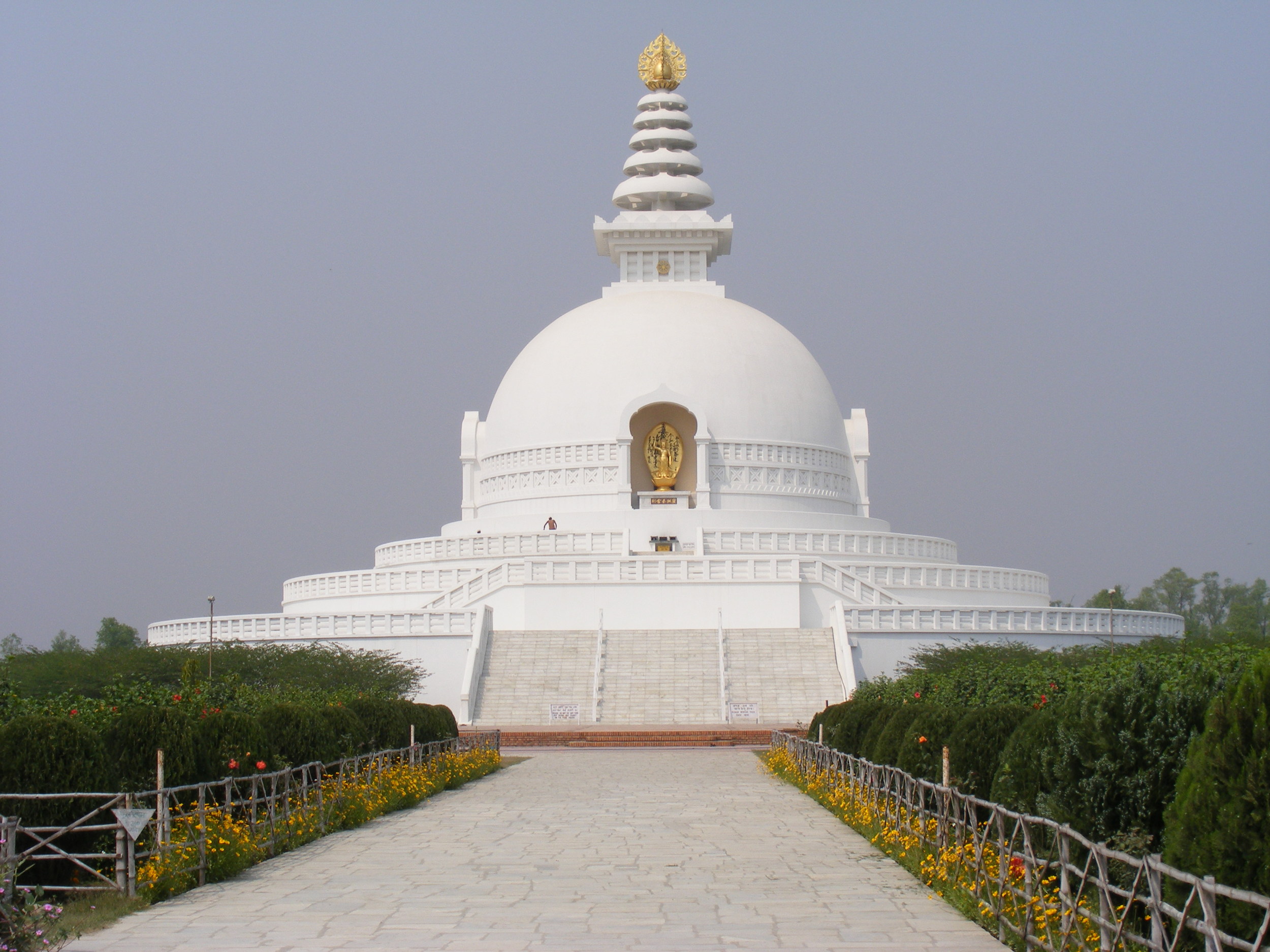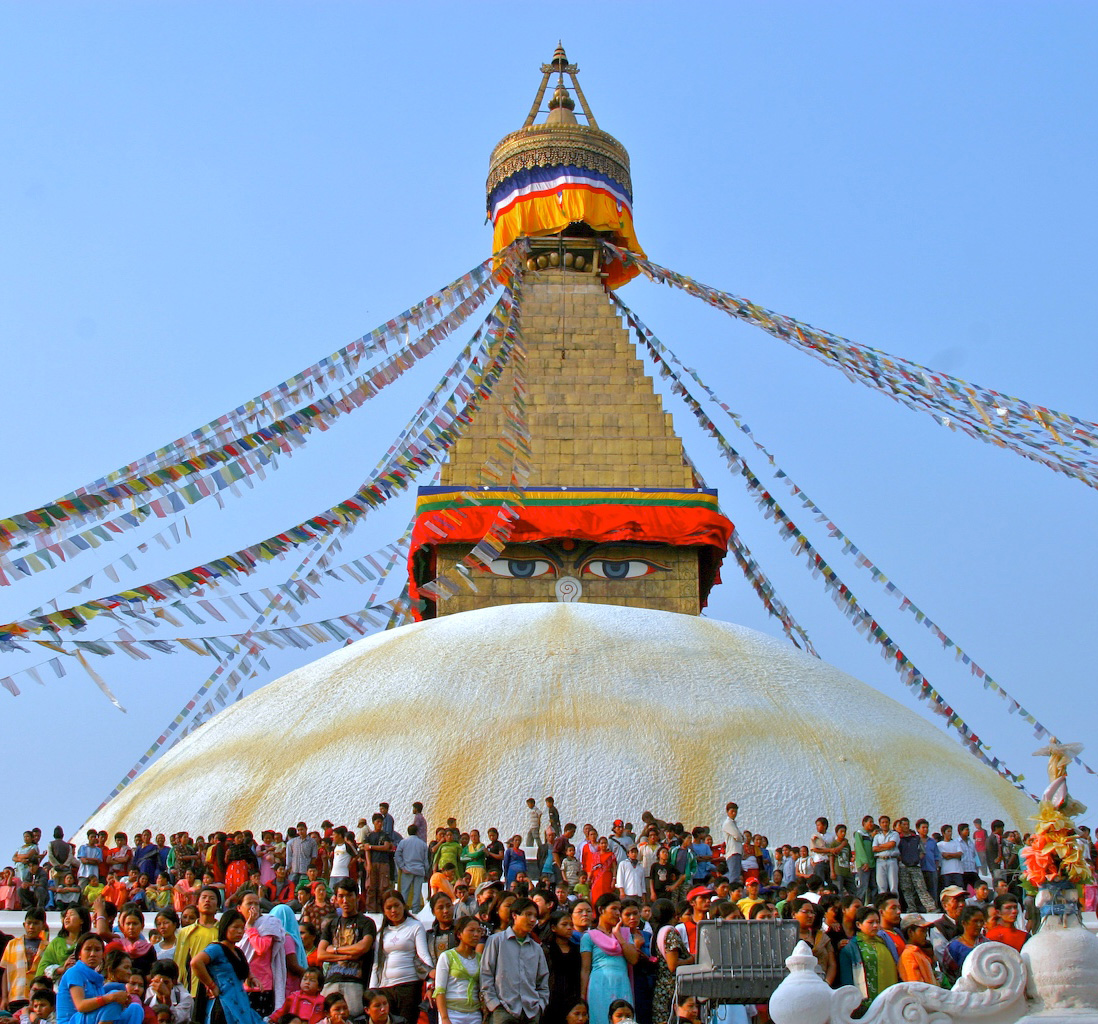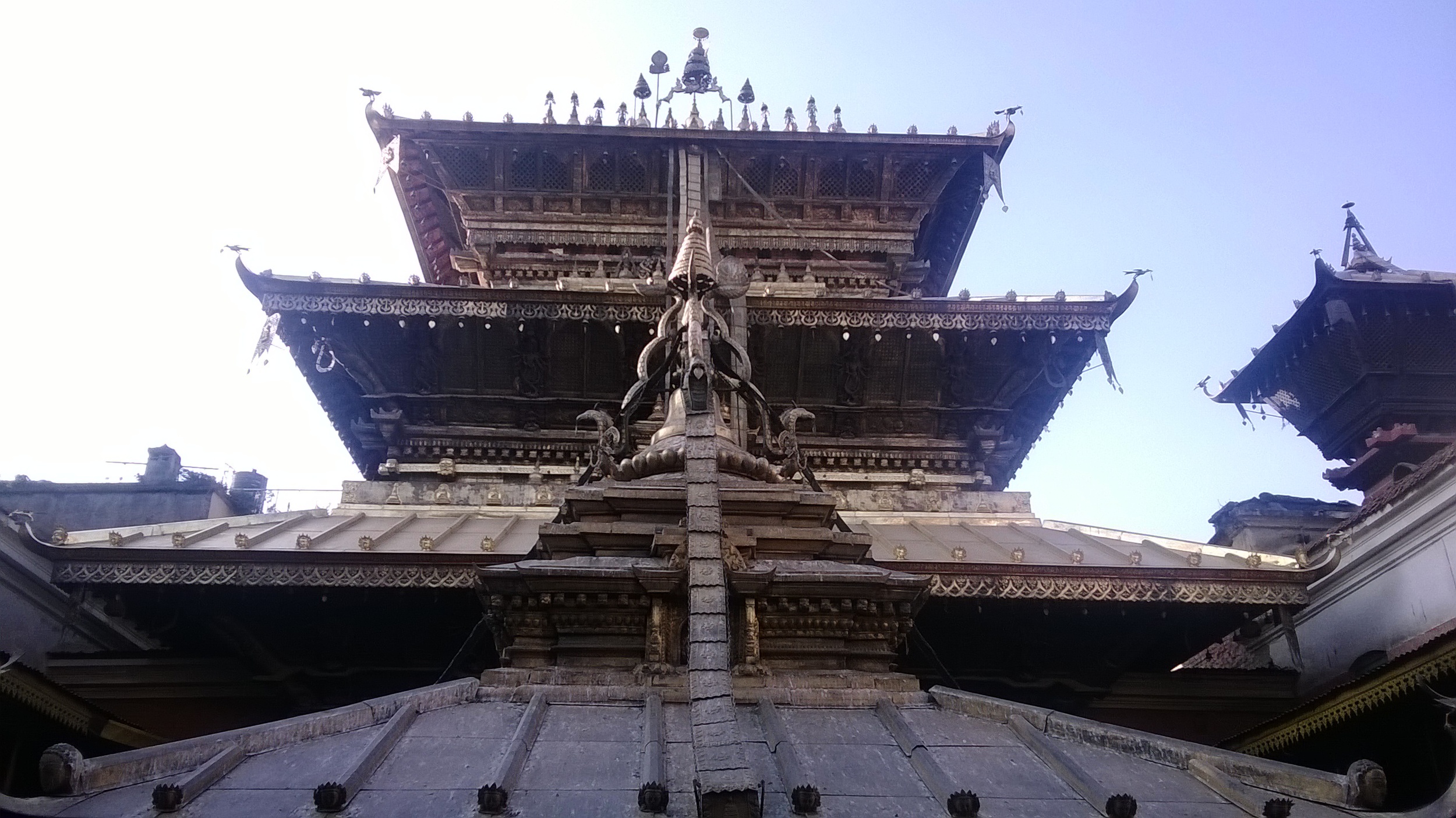LUMBINI
Lumbini is where it all began. Circa 563 B.C., in a place called Lumbini in mid-western Nepal, Queen Mayadevi of Kapilvastu gave birth to a child she named Siddhartha Gautam—a child who went on to be revered as Lord Gautam Buddha, the ‘Apostle of Peace’. After living in Lumbini for the first 29 years of his life, he began seeking the true meaning of life, and in doing so, attained enlightenment. His teachings gave directions to a new way of life for mankind, and eventually became one of the world’s great religions—Buddhism. His birthplace, Lumbini, is thus the most sacred site for Buddhist pilgrims from around the globe. To give it its due and make it worthy of an international pilgrimage site, in 1978, renowned Japanese architect Kenzo Tange was given the responsibility of making a master plan for what is known as the Lumbini Development Trust Area.
Accordingly, Lumbini was segregated as Sacred Garden Zone, Monastic Zone, and Educational and Culture Zone. The centerpiece of the garden is the Mayadevi Temple, with its stone image of the queen giving birth to Siddhartha, and near to it is the Puskarini Pond, where the divine infant was given his first bath. Nearby, too, is the famous Ashoka Pillar. Erected in 249 B.C.E. by Emperor Ashoka, it marks the Buddha’s birthplace. The Monastic Zone is divided into the East and West Zones. In the former are to be found monasteries built by followers of Theravat Buddhism, while in the latter are those built by followers of Mahayana Buddhism, as well as by those of Tibetan Buddhism. Inscribed as a World Heritage Site by UNESCO in 1997, Lumbini is a six-hour drive (about 265 km) from Kathmandu, and a 30-minute drive from Siddharthanagar (formerly called Bhairahawa), from where the Gautam Buddha Airport is three kilometers away.
Lumbini is, however, just the beginning of a Buddhist pilgrimage tour in Nepal. There are two other world heritage monuments, Boudhanath Stupa and Swyambhunath Stupa, both in Kathmandu, which are very important pilgrimage sites as well. Not only that, there are many other sacred Buddhist pilgrimage sites in Nepal that make the pilgrimage an extremely fulfilling one—sites such as Hiranyavarna Mahavihar, Kopan Monastery, Namobuddha, Seto Gumba, Dharmakirti Vihar, and so on.
Photos of Lumbini (below)
BOUDHANATH STUPA
Boudhanath Stupa, the most holy Buddhist site in the country, is said to be one of the world’s largest stupas, measuring about 100 m in diameter and about 40 m in height. The massive dome, with Buddha’s eyes gazing in all directions, sits on a three-layered base, around which are 108 deity figures and hundreds of brass prayer wheels that are spun by devotees when circumambulating the shrine. Within the Boudhanath premises are a number of monasteries of Mahayana Buddhism, and the remains of the past Buddha Kashyapa are said to be enshrined within the stupa. This fascinating site is visited by Buddhists from far and near, and more so, by Buddhists from Tibet.
SWOYAMBHUNATH STUPA
Swoyambhunath Stupa, located on top of a conical hill, has a lofty white dome, around which are the eyes of the Buddha (each pair having a third eye above them), and a glittering golden spire. One of the most ancient shrines in the valley, Swoyambhunath is believed to have been a revered Buddhist pilgrimage site since the 5th century. Losar (Tibetan New Year), Buddha Jayanti (Buddha’s birthday), and Gunla (a month-long Newari Buddhist festival) are some festivals that are celebrated with gusto here, when thousands of devotees reach the shrine either by climbing 365 steps up the hill, or by a winding road winding on the other side.
ANANDAKUTI VIHAR
Anandakuti Vihar, which is on the way to Swayambhunath, was established in 1943 by monks from Sri Lanka who follow the school of Theravada Buddhism. In 1945, they made a precious gift to the Vihar—three of the Buddha’s teeth. These sacred relics are put on view for the public once every year on the day of Buddha Jayanti. The late Bikchhu Amritananda Mahasthavir established a school, Anandakuti Vidyapeeth, in January 1952 as a Buddhist boarding high school under the Vihar’s jurisdiction.
HIRANYAVARNA MAHAVIHAR
Hiranyavarna Mahavihar (a.k.a. the Golden Temple), situated in Kwabahal of Patan, is a three-roofed pagoda-style temple housing a large silver figure of Shakyamuni Buddha. Famed for its beautiful architecture, there’s a smaller temple in front that is as beautiful as the main one, with a gilt roof and copper patakas (metal banners descending from the top). It is said that visiting the Golden Temple does away with the need for visiting other temples, since one will find shrines of most of the major temples of the valley here, including a lovely silver replica of Swayambhunath. A Dharma Dhatu Mandala with a large vajra is set on a double lotus podium up front, while around the courtyard are various deity figures. There’s a gumba (prayer hall) within the precinct, where monks gather in front of a fascinating figure of Amoghapasa Lokeswor (eight-handed Buddha).
KOPAN MONASTERY
Kopan Monastery, located north of Boudhanath, is a major center for the study and practice of Mahayana Buddhism based on the Tibetan Gelug tradition of Lama Tsong Khapa. It was founded by Lama Thubten Yeshe and Lama Zopa Rinpoche, with the first community of 25 monks making it their home in 1972. Today, the community numbers about 360, which include monks and lamas, besides other workers. Initially, the monastery also housed nuns, but later, a nunnery, Khachoe Ghakyil Ling, was built for them nearby in 1994, and it has now more than 300 nuns living there.
SETO GUMBA (DRUK AMITABH MOUNTAIN MONASTERY)
Seto Gumba (Druk Amitabh Mountain Monastery) was established in 1989 by His Holiness the Gyalwang Drukpa on a hill some three kilometers from Swoyambhunath Stupa. The Druk Gawa Khilwa Nunnery, with about 300 nuns, is housed here. The Tibetan style architecture is splendid, and there are many beautiful statues and paintings all over the place. With a lovely garden area, the whole atmosphere is refreshing, and quite a number of people take the two-hour hike to the site on weekends.
NAMOBUDDHA
Namobuddha is located 10 km from Panauti, an ancient Newar town that’s about 32 km from Kathmandu. The shrine here is dedicated to a prince’s supreme act of sacrifice. According to the legend, Prince Mahasatwo of Panauti once had gone to the jungle of Namobuddha for hunting. There he encountered a starving tigress and her cubs; they were so weak from hunger that they did not even move when he approached them. The prince was deeply moved, and there and then started to cut his own body parts to feed them. A festival is held every year in April/May to commemorate this extraordinary event.
DHARMAKIRTI VIHAR
Dharmakirti Vihar, in Naghal of Kathmandu was established in 1965 by followers of Theravada Buddhism to propagate its tenets. It has 20 lifetime ordained nuns (anagarikas) living there, who conduct Buddha Puja and Dharma Desana (preaching Dharma) five days a month. On special occasions, such as during Gunla (a month-long festival in July/August), pujas are held daily. It also runs the Dharmakriti Sikshya Sadan to impart moral education to preschoolers. Myanmar´s Aung San Suu Kyi was once a student at the Vihar for three months.
Well, these are some of the more fascinating Buddhist pilgrimage sites around Nepal, and one daresay, for Buddhist pilgrims from around the world, these are must-visit places when on a pilgrimage tour here.


